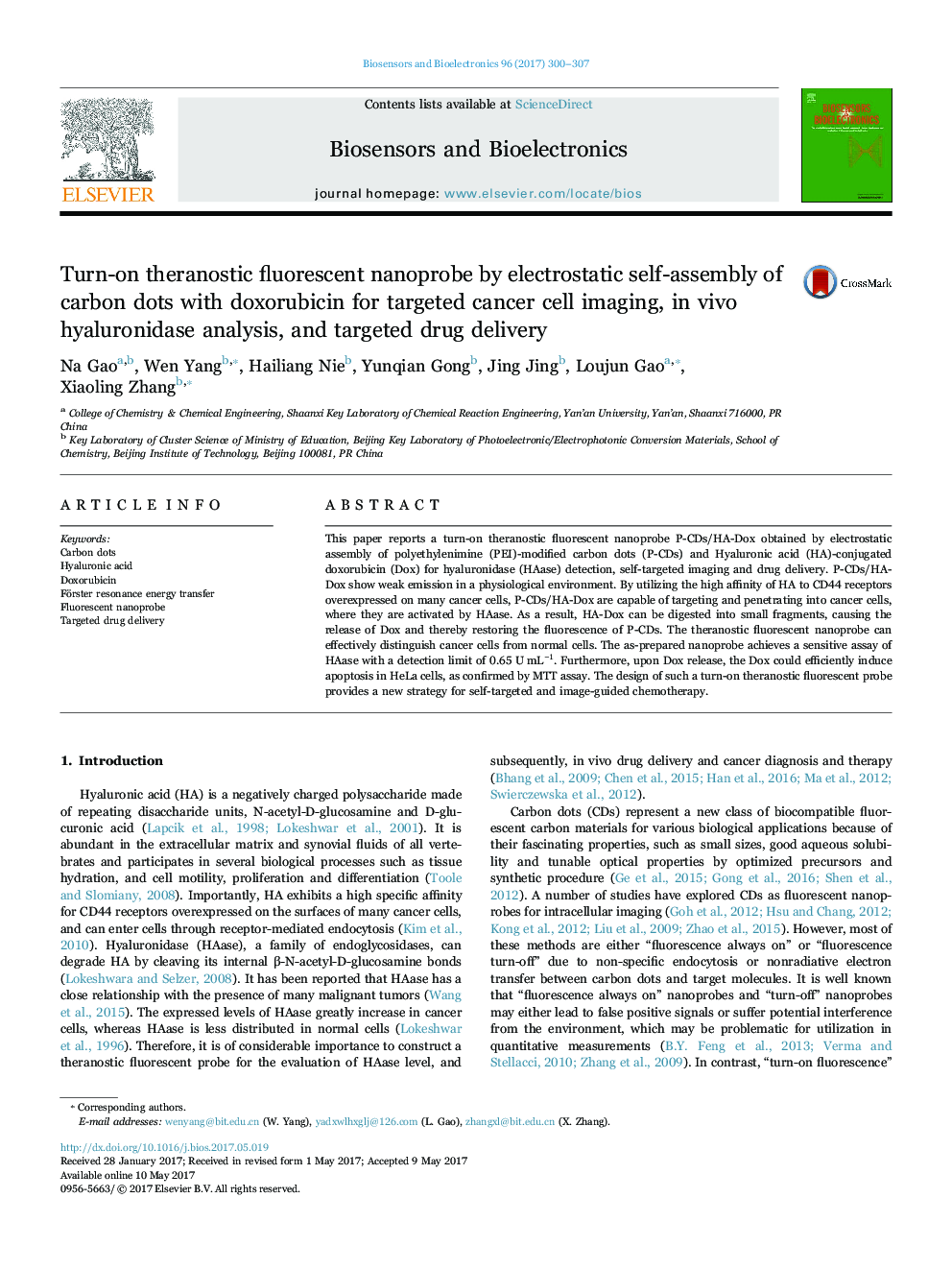| Article ID | Journal | Published Year | Pages | File Type |
|---|---|---|---|---|
| 5030869 | Biosensors and Bioelectronics | 2017 | 8 Pages |
â¢A well-designed turn on fluorescent nanoprobe has been constructed by integrating polyethyleneimine (PEI) modified-CDs (P-CDs) and hyaluronic acid (HA) conjugated doxorubicin (Dox) through electrostatic self-assembly.â¢The nanoprobe can effectively distinguish Hela cell (cancer cell) from NIH-3T3 cells (normal cell) based on expression of different amount of CD44 protein on surface of cells.â¢The MTT assay confirmed that the release of Dox from the turn-on fluorescent nanoprobe can efficiently induce apoptosis in HeLa cells.
This paper reports a turn-on theranostic fluorescent nanoprobe P-CDs/HA-Dox obtained by electrostatic assembly of polyethylenimine (PEI)-modified carbon dots (P-CDs) and Hyaluronic acid (HA)-conjugated doxorubicin (Dox) for hyaluronidase (HAase) detection, self-targeted imaging and drug delivery. P-CDs/HA-Dox show weak emission in a physiological environment. By utilizing the high affinity of HA to CD44 receptors overexpressed on many cancer cells, P-CDs/HA-Dox are capable of targeting and penetrating into cancer cells, where they are activated by HAase. As a result, HA-Dox can be digested into small fragments, causing the release of Dox and thereby restoring the fluorescence of P-CDs. The theranostic fluorescent nanoprobe can effectively distinguish cancer cells from normal cells. The as-prepared nanoprobe achieves a sensitive assay of HAase with a detection limit of 0.65Â UÂ mLâ1. Furthermore, upon Dox release, the Dox could efficiently induce apoptosis in HeLa cells, as confirmed by MTT assay. The design of such a turn-on theranostic fluorescent probe provides a new strategy for self-targeted and image-guided chemotherapy.
